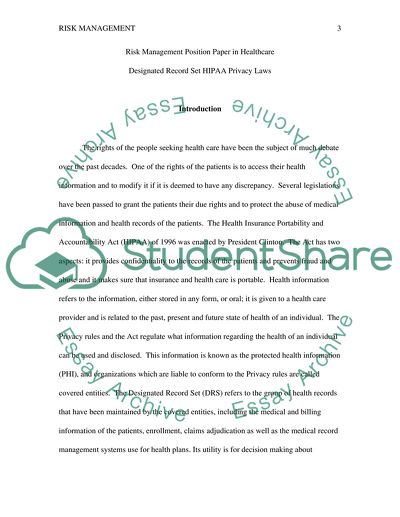Cite this document
(“Risk Management Position in Healthcare Designated Record Set HIPAA Research Paper”, n.d.)
Risk Management Position in Healthcare Designated Record Set HIPAA Research Paper. Retrieved from https://studentshare.org/social-science/1739528-risk-management-position-paper-in-healthcare-designated-record-set-hipaa-privacy-laws
Risk Management Position in Healthcare Designated Record Set HIPAA Research Paper. Retrieved from https://studentshare.org/social-science/1739528-risk-management-position-paper-in-healthcare-designated-record-set-hipaa-privacy-laws
(Risk Management Position in Healthcare Designated Record Set HIPAA Research Paper)
Risk Management Position in Healthcare Designated Record Set HIPAA Research Paper. https://studentshare.org/social-science/1739528-risk-management-position-paper-in-healthcare-designated-record-set-hipaa-privacy-laws.
Risk Management Position in Healthcare Designated Record Set HIPAA Research Paper. https://studentshare.org/social-science/1739528-risk-management-position-paper-in-healthcare-designated-record-set-hipaa-privacy-laws.
“Risk Management Position in Healthcare Designated Record Set HIPAA Research Paper”, n.d. https://studentshare.org/social-science/1739528-risk-management-position-paper-in-healthcare-designated-record-set-hipaa-privacy-laws.


